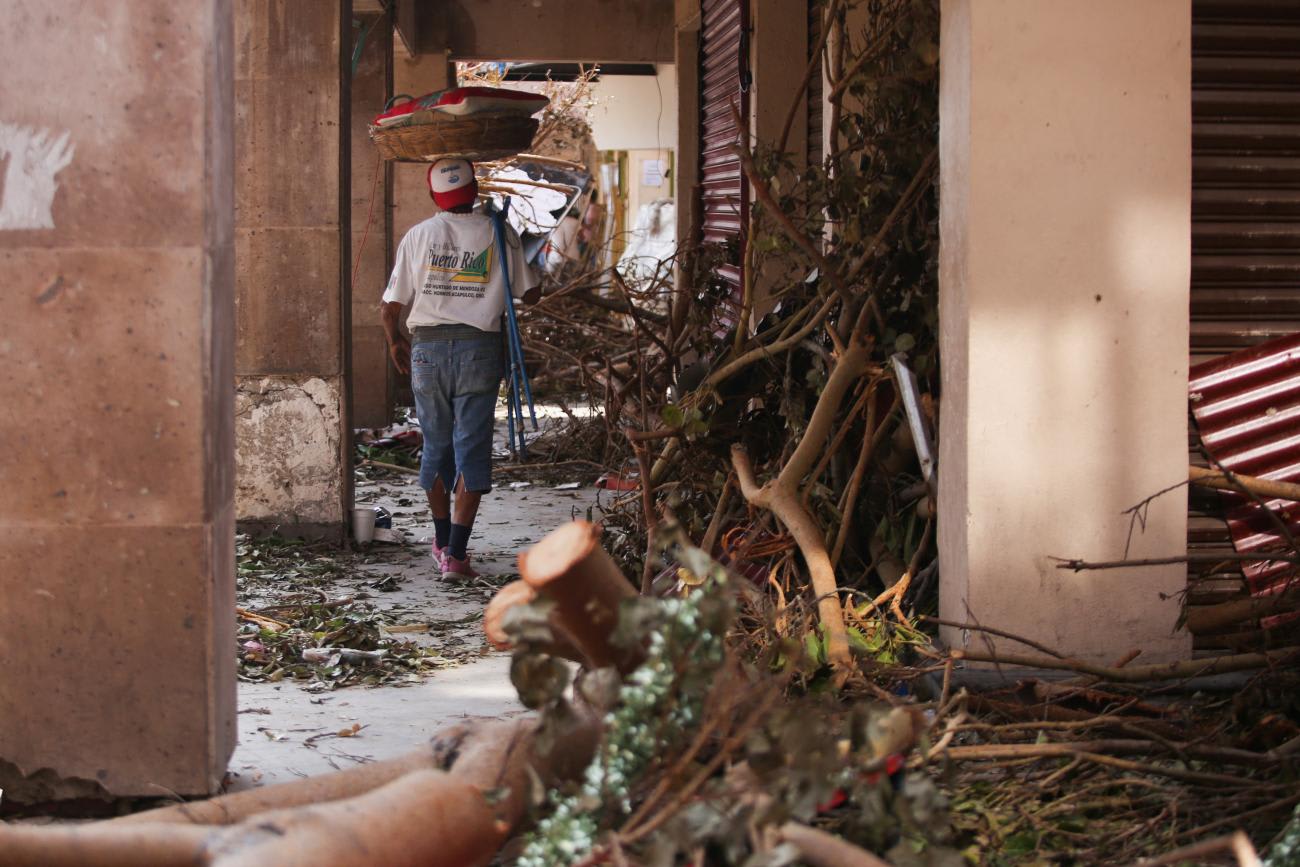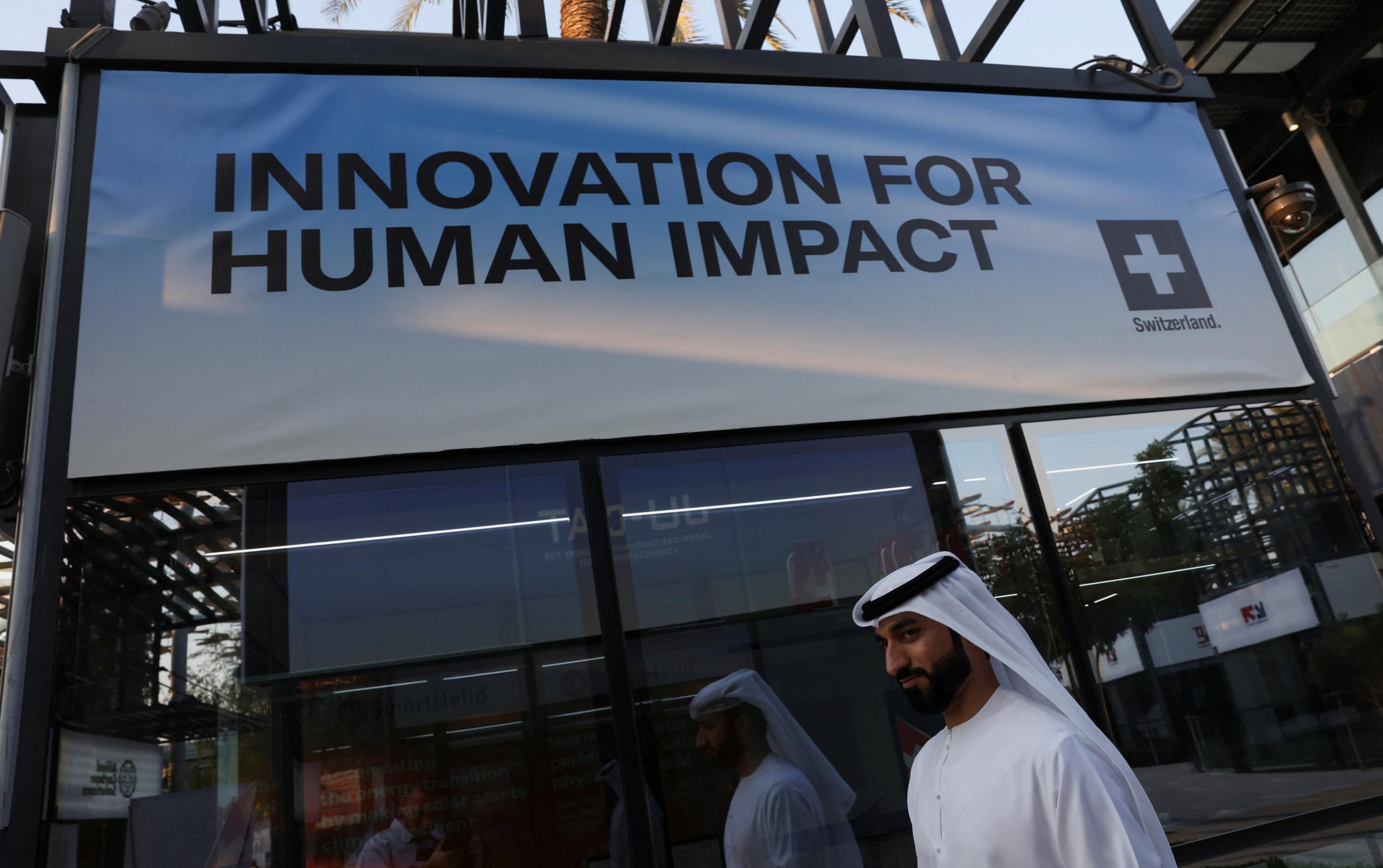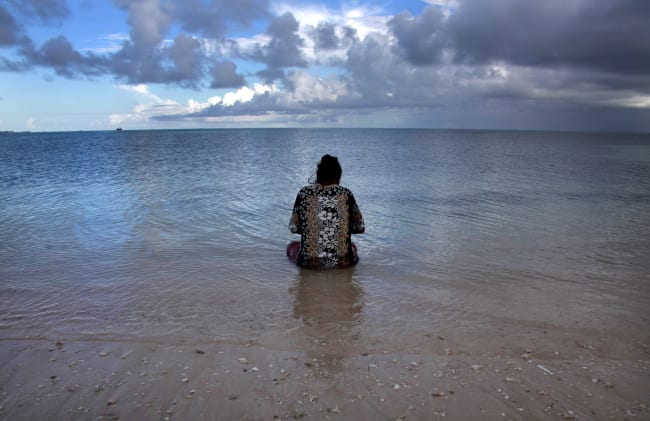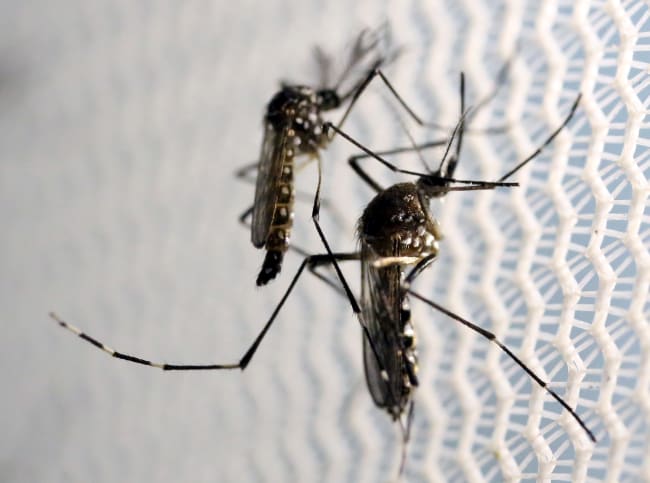The recent climate change conference in Dubai was a tale of two cities. One featured an urban paean to oil and gas, full of otherworldly shimmering towers—monuments to more than a century of global economic growth fueled by carbon. The other was as host to the twenty-eighth meeting of the Conference of Parties (COP28), the annual gathering of the United Nations Framework Convention on Climate Change (UNFCCC).
I attended the conference as a physician emissary in the growing field of climate medicine—shorthand for how the medical community of doctors, nurses, and allied clinical providers can better treat our patients and ensure resilience within our practice in the face of climate threats.
The emergencies people face due to climate change are not abstract future events. They are here, now, in the form of heat waves, hurricanes, floods, and fires. These disasters strike unevenly, piling the heaviest burdens on those least equipped to bear them. As Maria Neira, the World Health Organization's climate and health head, reminded us, "this is not just about climate, polar bears, and glaciers. This is about my lungs and your lungs."
The emergencies people face due to climate change are not abstract future events
A common takeaway from COP conferences is that we came up short again. The final accord pledged to transition away from fossil fuels, but for many who study how this crisis intensifies each year, the deal felt like a gentle saunter toward the stated solution rather than the imperative to run like hell. Such is the usual pace of contentious climate diplomacy—slow, steady progress that perpetually fails to keep pace with the accelerating consequences.
Nevertheless, COP28 surprised attendees with optimistic moments and grassroot, creative solutions to addressing climate and health. Here are some boots-on-the-ground takeaways from Dubai.
Your Health is Now a Priority
The health fallout of climate change reads like an emergency department triage list: heat exposures, flooding, wildfires, hurricanes, and forced displacement—all disproportionately affecting disadvantaged populations. Unbelievably, during the first twenty-seven COP conferences, health was a secondary consideration, behind a myriad of other priorities codified as thematic days within the two-week conference, such as finance, gender equity, energy, and biodiversity.
This year, health took its place as a core UNFCCC theme as organizers elevated the topic for the first time to its own thematic day. Plenary sessions included Bill Gates and John Kerry, as well as health-themed exhibits, science-policy seminars and side events hosted at the more than one hundred COP28 partner pavilions.
A palpable buzz hummed around the global health community on having its own day. The pavilions—small venues clustered together, branded via governments, international agencies, or NGOs—accordingly planned health-themed talks throughout the day. Physicians and nurses across the world had numerous platforms to share patient-centric messages to the UNFCCC community.
Presentations varied from the prosaic—a scientific explanation on extreme heat pathophysiology—to the dramatic—clinicians wearing white coats painted with depictions of technicolor climate disasters, lying down in protest on the conference walkways.

AI Makes its Case for Climate and Health
A lot of COP28 chatter centered around the potential of artificial intelligence (AI) to decarbonize the health-care sector. This is not a minor issue relegated to a minor industry. Health care is a significant carbon emitter, and in the United States is responsible for 8.5 percent of greenhouse gas emissions. If the global health-care system were a separate country, it would be the fifth-largest emitter in the world, according to Health Care Without Harm. The National Academy of Medicine has led an Action Collaborative on Decarbonizing the Health Sector to both lower the carbon emissions for which it is responsible and in delivering significant health equity benefits.
Yet to date health-care leaders have been trapped in a "valley of death," in that they too often lack reliable emissions data on their own systems to confidently implement such initiatives and to link their decarbonization efforts with improved health-care delivery. I have personally heard from several health-care leaders that the lack of accurate data on decarbonization is a nonstarter.
Recent advances in artificial intelligence could potentially bridge this gap. COP conferences have a separate Innovation Zone for commercial enterprises to show off their climate solutions. Those discussions centered around how AI could process and synthesize fragmented, siloed data from massive sets—to separate signal from noise, clarify relationships, and yield actionable recommendations in data analysis to reduce the formidable thresholds in enacting sustainability initiatives.
A simple example is that AI could point out straightforward interventions, for example, that a clinical department's outpatient appointments should all be virtual on a given afternoon of the week. This suggestion could easily be coupled with revenue projections—which would expect no change; carbon outputs—less, because patients would not be driving in; and health equity metrics—improved, because many patients find it difficult to find the time and a ride to see their doctor.
Just as with almost every other aspect of our society, the potential benefits of AI portend to make this an exciting and scalable solution space.
Your Kids are Coming for Your Oil
Youth activists from around the world were increasingly articulate and furious. The uptick from years past has been demonstrable in climate and health narratives that call out the single root cause of the disease of global carbon poisoning—the oil and gas industry.
If the global health-care system were a separate country, it would be the fifth-largest emitter in the world
In the field of medical toxicology, our understanding of overdoses and poisonings are measured by a dose-response curve. The youth movement within COP is increasingly co-opting this health paradigm, calling out the oil and gas hegemons for intentionally tipping the scales as bad faith actors in the historical vein of tobacco companies. What was perhaps a modicum restraint in health rhetoric at previous COPs has now evolved into a confrontational, mutually exclusive proposition: you choose—your oil or your health.
Take Two Aspirin—and Check the Air Quality Index
Your next doctor's visit might include a climate talk. COP28 saw unprecedented numbers of health-care providers engaging in presentations, networking, and providing expertise on climate health consequences to all UNFCCC stakeholders.
This upswell has been a long time coming for clinicians, with a conspicuous absence of a proactive voice on climate change for many years. Doctors are indeed trusted health messengers, but they also may be hesitant to talk about things in professional forums where they lack particular training or expertise.
Yet the health-care community is increasingly emboldened. One reason is that we are witnessing the maturation of dedicated climate and health training programs for health-care providers—including graduate medical education fellowships and professional diploma programs for all providers. The earliest started just under ten years ago at the University of Colorado.
The graduates of these programs are now themselves emerging as credible, knowledgeable, and experienced leaders—reaching a critical mass—and scores of them were at COP, networking, presenting, and influencing. This inflection point is also occurring at medical schools across the country, where climate and health concepts are increasingly embedded within the curricula. We are already seeing a new generation of doctors who will ask you about diet, exercise, smoking, and exposures to climate risks such as poor air quality or extreme heat.

Funding Will Follow
The inaugural health day at COP was a watershed moment in that more than $1 billion was pledged for climate and health solutions from several new and perennial players, including The Global Fund, the Rockefeller Foundation, and the Wellcome Trust. This funding will not only ensure that critical work in this sector continues but also facilitate new, innovative, and potentially cross-sectoral solutions. Health will now be a primary denominator to be considered when crafting climate solutions for the foreseeable future. These pledges, if realized, will dwarf historic global health expenditures on climate change.
Funding details were vague, yet health groups were immediately buzzing on potential alliances and teaming strategies to optimize future grant applications. High on the wish list is funding for climate health research and attribution science, training a climate-savvy health-care workforce, resiliency projects linked to health metrics, and the decarbonization of health care.
Accurate Risk and Optimism
I overheard that COP is the new Davos—the everything, everywhere, all at once gathering on climate change. Within this frenetic two-week conference of more than eighty thousand people, it can easily appear as if little is being accomplished, and that progress is once again insufficient for the crisis. Confidence in COP28's leadership was undercut by simultaneous reports of new drilling deals being made during the conference by the UAE, as well as conspicuously wobbly rhetoric on the integrity of climate science.
But within the seams, I witnessed a rich ecosystem of solution space driving collaboration and innovation. Last year, the health sector took a great leap forward. As more in the field understand climate change as a threat to our health, we can both have an accurate risk assessment within shared values of healthy families and communities—and simultaneously feel some optimism from the health solutions emerging from ever-increased engagement on the climate crisis.













